Pimoroni Pico Plus 2
by Pimoroni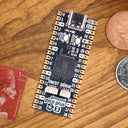



A top of the line Pirate-brand RP2350 microcontroller with 16MB of flash memory, 8MB of PSRAM, USB-C, Qw/ST and debug connectors.
We adore the versatility and value of Raspberry Pi Pico but we also enjoy a souped up RP2350 board with all the extras baked in. With Pimoroni Pico boards, we've tried to cram in as much extra functionality as we possibly can whilst keeping to the original Pico footprint to maintain compatibility with existing Pico addons.
Pimoroni Pico Plus 2 is powered and programmable via USB-C and comes with an upgraded 8MB RAM, 16MB of flash storage and easy to read pin labels. It's super easy to connect up to things without soldering, with a Qw/ST connector (for adding I2C sensors and breakouts via cable), a SP/CE connector (for hooking up SPI/serial devices via cable) and a debug connector (for if you like to program using a SWD debugger). We've also added a reset button, and a BOOT button - this can also be used as a user switch.
Features
- Powered by RP2350B (Dual Arm Cortex M33 running at up to 150MHz with 520KB of SRAM)
- 16MB of QSPI flash supporting XiP
- 8MB of PSRAM
- USB-C connector for power, programming, and data transfer
- Qw/ST (Qwiic/STEMMA QT) connector for attaching breakouts
- Intriguing SP/CE connector
- 3 pin debug connector (JST-SH)
- Reset and BOOT buttons (the BOOT button can also be used as a user button)
- User LED indicator
- On-board 3V3 regulator (max regulator current output 600mA)
- Input voltage range 3V - 5.5V
- Compatible with Raspberry Pi Pico add-ons
- Measurements: approx 53mm x 21mm x 9mm (L x W x H, including connectors)
Pinout and Schematic

Getting Started
Connecting Breakouts
If your breakout has a Qw/ST connector on board, you can plug it straight in with a JST-SH to JST-SH cable, or you can easily connect any of our I2C breakouts with a JST-SH to JST-SH cable coupled with a Qw/ST to Breakout Garden adaptor.
Notes
- The user LED is wired to GP25, just like on an ordinary Pico. You can blink it in exactly the same way!
- As well as being useful for putting your Pico Plus 2 into bootloader mode, you can also use the BOOT button as a user button. It's wired to GP45 and active low.
About RP2350
The RP2350 chip is the Double Quarter Pounder & Fries to the RP2040's Double Cheeseburger and can have one or more RISC-V burgers instead of either of the M33 ARMs, to stretch the metaphor.
In addition to the modern M33 ARM cores, there are sides of: more PIO capability, a variety of low power states for sipping electrons, a whole security system and some sprinklings of specialist digital video circuits to offload DVI/HDMI output.
You can expect a tasty boost in performance - our "real world" MicroPython tests are running up to 2x faster compared to RP2040, and floating point number crunching in C/C++ is up to 20x faster. The extra on-chip RAM will make a big difference when performing memory intensive operations (such as working with higher resolution displays) and even more can be added thanks to external PSRAM support.
RP2350 comes in two flavours - A (standard) and B (all the pins). The B chip has a stonking 48 usable GPIO pins, including 8 ADCs and 24 PWMs, and features on some of our new products.
-
Pimoroni Pico Plus 2
PIM724£10.75
Extenders, headers and cables for Pimoroni Pico
Don't forget the headers!
-
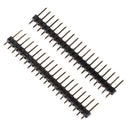 Pico Header Pack+ £1.50
Pico Header Pack+ £1.50 -
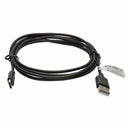 USB-A to USB-C Cable+ £4.00
USB-A to USB-C Cable+ £4.00 -
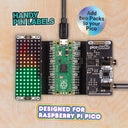 Pico Omnibus (Dual Expander)+ £7.00
Pico Omnibus (Dual Expander)+ £7.00 -
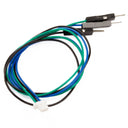 3 Pin JST-SH Cable (Pico Debug)+ £2.50
3 Pin JST-SH Cable (Pico Debug)+ £2.50 -
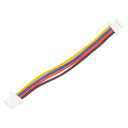 4 Pin JST-SH Cable (Qwiic, STEMMA QT, Qw/ST)+ £1.25
4 Pin JST-SH Cable (Qwiic, STEMMA QT, Qw/ST)+ £1.25 -
 8 Pin JST-SH Cable (SP/CE)+ £1.50
8 Pin JST-SH Cable (SP/CE)+ £1.50
Add 4G connectivity to your project
Wide coverage
-
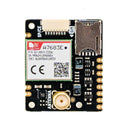 Clipper LTE 4G Breakout (SP/CE)+ £16.25
Clipper LTE 4G Breakout (SP/CE)+ £16.25
Great addons to go with your Pico / compatible board
Add features like displays, audio and more!
-
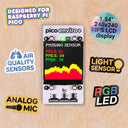 Pico Enviro+ Pack+ £37.50
Pico Enviro+ Pack+ £37.50 -
 Pico Display Pack 2.8"+ £15.75
Pico Display Pack 2.8"+ £15.75 -
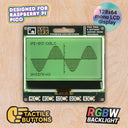 Pico GFX Pack+ £13.75
Pico GFX Pack+ £13.75
Shop with confidence – we've been serving the hobbyist electronics, Maker, and retro gaming communities since 2012.
- Satisfaction or refund guarantee
- Worldwide shipping via mail or courier
- 57,000+ customer reviews
- Secure website and payments









